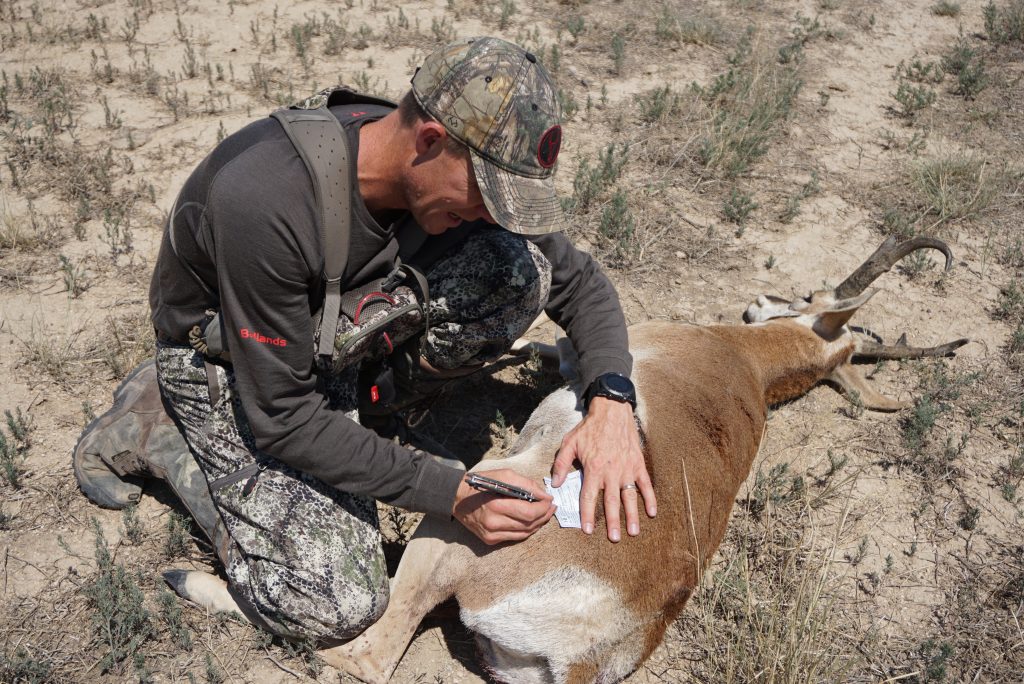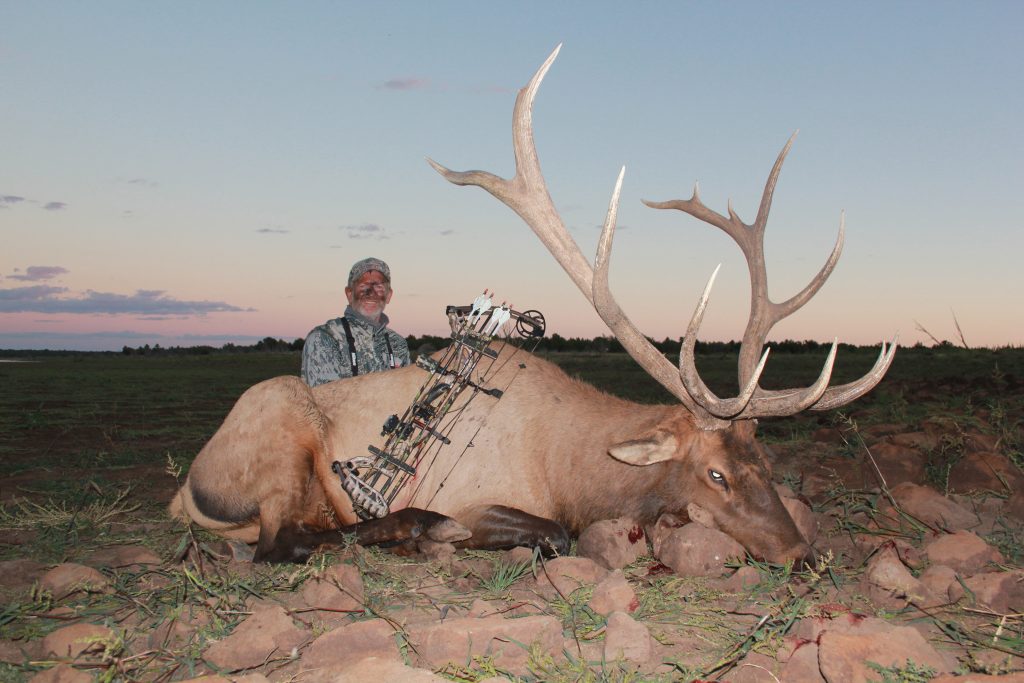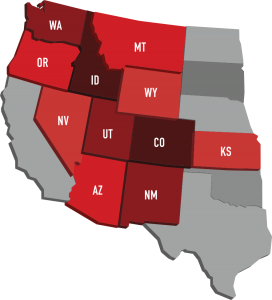Every year about this time, my phone starts going off with text messages from friends far and wide. “Can you believe it? I drew the tag!” Not a tag, but the tag — the one they’ve been dreaming about for many years that unlocks the gate to one of bowhunting’s great adventures. It might be hunting elk in Arizona, mule deer in Utah or pronghorn in Nevada. Or, if they’re extremely fortunate and have been playing the game long enough, perhaps it’s a tag to hunt bighorn sheep anywhere they’re found.
Today, the very best hunting out West with either firearms or archery equipment for trophy-class animals occurs in limited-entry units where the available tags are tightly controlled and season restrictions apply. The exceptions are landowner permits (tags issued to landowners based on several criteria, including how much land they own and the local game population, among others) or those with pockets deep enough to purchase auction tags.
Maximizing your chances at drawing as many of these coveted tags as possible over your lifetime requires focus, dedication and a knowledge of how to play the odds. I’ve been playing the game for 30-some years, during which I’ve drawn some really good tags. Most years, however, were like 2016 when I applied for 19 tags and only drew a whitetail tag in Kansas.
For a complete breakdown of all the information you'll need to bowhunt the West, click on the map below.
The Basics
Here’s how to make the game work for you. Each state operates their hunting seasons and licensing procedures independently. What that means is that you have to study the application and draw processes in each state you wish to apply in. There’s lots of information available online. Many hunters build files for each state, updating them annually, so they can keep track of the latest information.
The most important thing to remember is that no two states operate their license and tag programs identically. Each has its own application periods and deadlines, fee structure, whether they use a preference point or bonus point system (or no point system at all), etc.. In some states you are required to buy a pricey — and nonrefundable — nonresident hunting license just to be able to apply for a tag you probably won’t draw and to accrue a preference or bonus point.
One other note. Because these tags are so difficult to draw, many serious bowhunters focus on a species, not a state. For example, if your dream is to hunt a huge bull elk, do you really care if the hunt occurs in Arizona, Utah, Nevada or New Mexico? It’s better to accumulate points in several states over time, and then go hunting wherever when you finally draw.

Knowing where to go and how to hunt the species you’ve drawn is often the difference between a success and sob story. Don’t cut corners when your name is finally drawn!
Develop A Budget
If you’ve never applied for nonresident western licenses and tags, get ready for some serious sticker shock. Western states’ game departments survive by charging nonresidents big money for the privilege of hunting their state. So when you begin your research, it all begins and ends with how much money you can afford to lay out at any one time. Each state publishes a hunt proclamation annually that tells you everything you need to know about costs and how to apply. You can find them online. Studying the regulations will tell you how much it will cost.
Now that you have a dollar figure in mind based on your budget, you have to decide which species you really want to hunt and how important trophy size is. If you have limited resources and your dream is to kill a giant bull elk, you’ll up your odds by applying only for elk hunts in several states, and not throwing money at, say, a handful of pronghorn hunts. That said, another factor is that some species and some hunts for those species are much harder to draw than others, and are much more expensive. For example, drawing a bighorn sheep tag is the most high-odds and expensive game out there with most sportsmen hoping to draw one, or maybe two, in their lifetime.
The Point Game
Nothing confuses hunters more than various states’ point systems. The point system came about when the number of sportsmen who wanted to hunt a particular species far exceeded the number of available tags. The only fair way to distribute the available tags was to throw everyone’s name into a hat and draw.
At first blush, this sounds fair and equitable. In reality, states discriminate against the nonresident by allocating a significantly higher number of available tags to resident hunters and charging them much more money for hunting licenses and tags. Also, many tags are issued each year for special hunts, like youth-only hunts, taking a chunk of the available permits.
Be that as it may, there are two basic types of points: bonus points and preference points. In states that use a bonus point system, every hunter is assigned a random number by the state’s computer system. Say a specific hunt has 100 tags available. In that case, the 100 lowest random numbers generated by the computer will be issued tags. A bonus point is, in effect, an extra random number for each year the applicant has been unsuccessful in the draw. Thus, the more bonus points you have, the more chances you have of being drawn. Some states have also implemented what they term a “max bonus point pool,” which means a few tags are set aside for those with the maximum number of bonus points you can accrue. If you reach this level, you’ll eventually be guaranteed a tag. The one advantage to the bonus point system is that, technically, a person applying for the first time could possibly draw.
The preference point system reserves all tags for those applicants with the most accrued points. The downside to this is, obviously, you won’t draw until you accrue enough points to be in the game. But if you stick with it long enough, you will eventually draw. Also, there are some units within a state that are not as popular as others, and thus the demand is not nearly as high. In that case, it’s possible to draw a tag with fewer points. I put this to my own use in my home state of Arizona — drawing archery elk tags in units that don’t have the reputation of producing gagger bulls, but still offer excellent hunting — with a handful of points. At least I got to go hunting, and one year I did arrow a bull that scored 361 gross inches.
Also, many states allow you to simply purchase a point each year rather than actually applying for the hunt. This is a great option when the draw odds are extremely low, and it saves you from having to put the tag money up front for several months before the state refunds it to you when you do not draw.
Some states, notably Idaho and New Mexico, do not have any type of point system, and every applicant has an equal opportunity of drawing. The odds are based solely on the number of applicants and the amount of available permits.

Applying for limited-entry tags is tedious and pricey, but when your name is drawn and an envlope harboring the tag of a lifetime drops through your mail slot, it’ll be well worth the wait. Keep applying. Trust us!
Planning
Before you can make a realistic, workable plan, it’s time for some introspection. Ask yourself these important questions: How important is trophy quality to me? How many days can I personally scout (not hunt) a unit if I draw? How many days can I realistically hunt? Am I really fit enough to handle rough, high-elevation country? Do I want to hunt on my own or with an outfitter?
This is not the time for false bravado. But before you ever apply for any hunt, make sure you understand what it’s going to take to be successful if the dice come up “7” and you do draw the tag.
I do have one recommendation, especially for those who do not live in the West or do not have extensive hunting experience in the region. Say your dream is that big bull elk. If your budget permits, accumulate points in top trophy-quality elk states like Arizona, Utah, Nevada and New Mexico. At the same time, look at going elk hunting (either on your own or with an outfitter) in a state with over-the-counter elk tags. You might end up in the middle of a bunch of other hunters and the trophy potential might be poor, but the experience you’ll gain will be make you a much better elk hunter so that when you do draw that dream tag you won’t be as blind as a newborn puppy. And besides, just being out there beats the heck out of sitting on the couch wishing you were.
Tag Application Services
There’s no doubt that all this application stuff is confusing and time consuming. One way around it is to employ the services of a business specializing in doing all the work for you.
The first of these was United States Outfitters, which started back in the 1980’s. Owner George Taulman, a pharmacist by trade, had a vision. What if he did all the work for clients, applying them for the best hunts in as many states and for as many species as they wanted, and even fronted them the money needed to apply for several tags each year? I was one of George’s first customers and had some great adventures thanks to his service.
Since that time, numerous tag application services have cropped up. Most make a sizable portion of their money as hunt booking agents, selling their clients guided hunts to help them maximize the odds that they will be successful once a tag has been drawn. Some also charge you a nice chunk of change for their services. They have their plusses and minuses, and each is run uniquely. Before you commit, do your research. Many of us use an application service for some things and apply on our own for others. At the end of the day, it’s a lot of fun to research units. If you have the time, do the research, develop a strategy and understand the rules and the odds, and you’ll have a great time and save some serious coin.
The Bottom Line
When I started seriously hunting the West back in the late 1970s and on through the 1980s, pretty much all you had to do was buy an archery elk, mule deer, or pronghorn tag over-the-counter and go hunting. Many years I’d elk and mule deer hunt in three or even four states. Few hunters had caught on to backpacking as a way to get away from the crowds, and because I could buy tags at will I could hunt the same basic area year in and year out, learning the country and getting better at it every day. It was grand.
Sadly, those days are over. Demand for tags is such that thousands and thousands of hunters apply each year and do not draw. And drawing a coveted high-demand tag is no guarantee of success, either, especially if the goal is a record-class animal. As my old mentor used to say, “No matter how much you want to kill them, mostly they don’t want to be killed.”
Still, that’s the game today for those of us on a working man’s budget who cannot afford to buy his or her way behind the gates of the best private ranches, or bid tens or even hundreds of thousands of dollars on a special auction tag. The good news is there is still a lot of public land to hunt where tags are easier to obtain.
My advice is simple. Make a multi-year plan, apply for tags and/or buy points, and while you wait to draw a coveted high-demand tag, go hunting anyway and savor every moment of it. Never forget that the privilege of hunting public land is not something most of the rest of the world enjoys, but Americans do.
I give thanks for that every day.
Are you applying for a dream western tag this year? Where do you want to go, and what do you want to hunt? Drop me a note at brobb@grandviewmedia.com, and tell me about your experiences. I'd love to hear about them!







